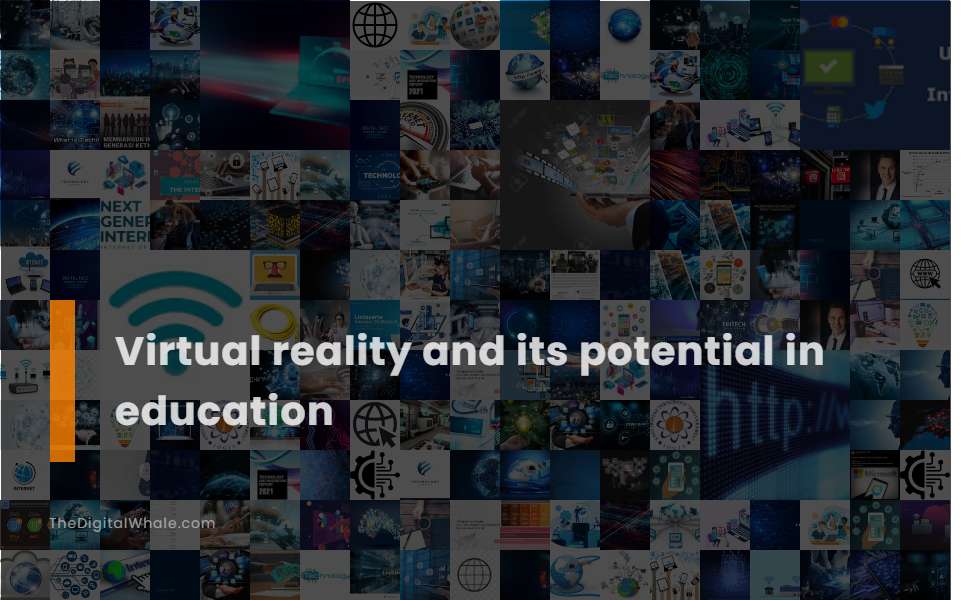Virtual Reality and Its Potential In Education
What are the advantages and disadvantages of virtual and augmented reality in education? What are some potential uses of virtual reality in education? Let's find out more about Virtual Reality and Its Potential In Education.

Authentic Learning Environments: Simulates real-world scenarios in a controlled and safe setting.
Virtual Reality (VR) creates authentic learning environments by simulating real-world scenarios in a controlled and safe setting, enhancing learning through authentic representations, interactive experiences, and collaborative problem-solving. This innovative approach promotes motivation, curiosity, and deeper cognitive processing, providing a safe space for learners to practice and learn from scenarios such as safety inspections, hazard recognition, and equipment operation. The use of VR allows individuals to avoid the risks associated with real-world environments, while also enabling repeated practice and refinement of skills in a highly immersive and engaging manner. For more on how VR creates these Authentic Learning Environments, explore the wealth of information available online to deepen your understanding.
Enhanced Engagement and Motivation: Fosters a heightened sense of engagement and motivation among learners.
Virtual Reality (VR) significantly enhances engagement and motivation in education by providing immersive, interactive environments that capture students' attention, foster a deeper connection to the subject matter, and make learning more enjoyable and memorable. The immersive nature of VR sparks curiosity, enhances focus, and fosters emotional connections to learning materials, leading to increased engagement among learners. By visiting Talespin, you can explore more on how VR combats boredom and improves information retention. This transformative approach to education is paving the way for a future where learning is not only effective but also captivating and inspiring.
Accelerated Learning and Increased Confidence: Speeds up the learning process and boosts students' confidence in applying new skills.
Virtual Reality accelerates the learning process by providing immersive, hands-on experiences that allow students to develop new skills up to four times faster than traditional methods. It boosts students' confidence by offering real-world simulations and immediate feedback, leading to improved long-term retention and self-assurance in applying their skills. For more information on how Virtual Reality is transforming education, you can visit the article on Axon Park. By engaging with these cutting-edge techniques, learners can experience significant advantages over conventional educational approaches.
Reduced Distractions and Enhanced Focus: Minimizes external distractions and improves overall focus.
Virtual Reality (VR) is revolutionizing education by creating immersive environments that significantly minimize external distractions, allowing learners to maintain a high level of focus. As outlined by a PwC study, VR learners were remarkably less distracted compared to those in conventional classroom settings, showcasing the medium's potential to enhance concentration. By embedding students in a controlled setting, VR encourages continuous engagement with the material, fostering a more productive educational experience. According to Victoryxr, the transformative nature of VR in education is evident as it maximizes student learning by sustaining attention and interest throughout learning activities.
Improved Long-Term Retention: Enhances long-term retention of educational material.
Virtual Reality significantly enhances long-term retention of educational material by engaging the senses, emotions, and cognitive functions. Studies reveal that retention rates can soar up to 80 percent one year after training, far surpassing conventional methods. Through active participation and emotional engagement, VR education activates multiple senses and neural pathways, including crucial areas like the hippocampus and prefrontal cortex, enhancing memory formation and recall. For more insights into how VR is transforming learning, visit Training Industry to explore how this technology continues to produce superior educational outcomes.
Related:
What are the potential applications of Driverless Cars in the future? What are some of the possible future transportation methods? Let's find out more about The Future of Transportation: Driverless Cars, Electric Vehicles, Etc..
Time Efficiency for Students: Significantly reduces the time students spend on training.
Virtual Reality (VR) significantly enhances learning efficiency by providing immersive and interactive experiences that drastically reduce the time required for training. In comparison to traditional classroom methods, studies show that VR learners can complete their training up to 400% faster. By eliminating the need for travel and waiting for specific circumstances, VR training further decreases training time, with companies like Pfizer and Walmart achieving notable reductions in task training times. Additionally, VR-trained employees can learn in just 30 minutes what would typically take two hours in a classroom setting. For a deeper understanding of [Virtual Reality Training](https://www.pwc.com/us/en/tech-effect/emerging-tech/virtual-reality-study.html) and its benefits, exploring such emerging technologies unveils numerous advantages in various training environments.
Cost Savings for Institutions: Reduces expenses by replacing the need for physical facilities and equipment.
Virtual Reality in education reduces expenses for institutions by replacing the need for physical facilities and equipment, leading to significant cost savings. For example, there is an impressive reduction in costs for advanced cardiac life support training and a remarkably lower cost for orthopedic surgery training compared to traditional methods. For more insights into how this technology revolutionizes educational approaches, visit the detailed analysis on Virtual Reality applications in education.
Enhanced Visualization: Heightens visualization by offering immersive and interactive experiences.
Virtual Reality enhances visualization in education by creating interactive and immersive environments, allowing students to explore real-world scenarios, historical sites, and complex scientific concepts through dynamic and visually rich formats, thereby making learning more engaging and experiential. This transformative technology is making an unbelievable reality by reigniting educational experiences and profoundly impacting student engagement and comprehension.
Global Outreach and Accessibility: Provides equal learning opportunities regardless of geographical or language barriers.
Virtual Reality (VR) and Augmented Reality (AR) enhance global outreach and accessibility in education by providing equal learning opportunities regardless of geographical or language barriers. Initiatives such as EON Reality's multilingual support are pivotal, offering the ability to access immersive learning experiences from anywhere in the world.
Interactive and Engaging Learning: Incorporates fun and interactive elements, making learning more enjoyable and effective.
Virtual Reality (VR) and Augmented Reality (AR) are revolutionizing education by transforming classrooms into immersive and engaging learning environments. These technologies not only increase student engagement and retention through gamification and interactive simulations but also enhance the educational experience with [virtual field trips and storytelling](https://marketscale.com/industries/boxlight/interactive-learning-inclusion-reward-systems-storytelling/). Immersive learning with VR and AR enables students to actively interact with content, participate in simulations, and engage with complex concepts through enhanced visualization. By allowing students to experience historical events and scientific concepts firsthand, VR technology boosts classroom participation and accommodates different learning styles, making lessons more dynamic and hands-on.
Related:
What are some of the clean water technologies that have recently been developed? What are some simple technologies that can be used in water conservation planning? Let's find out more about Water Conservation Through Technology.
